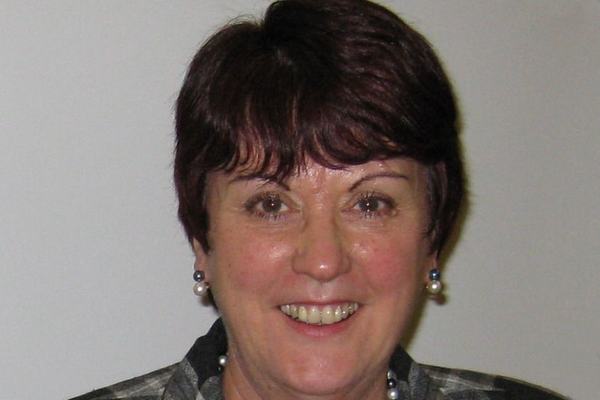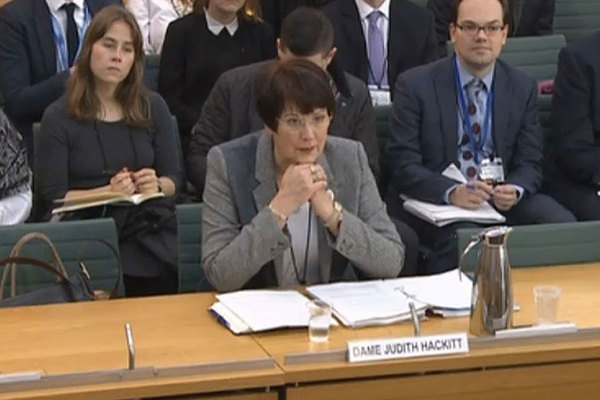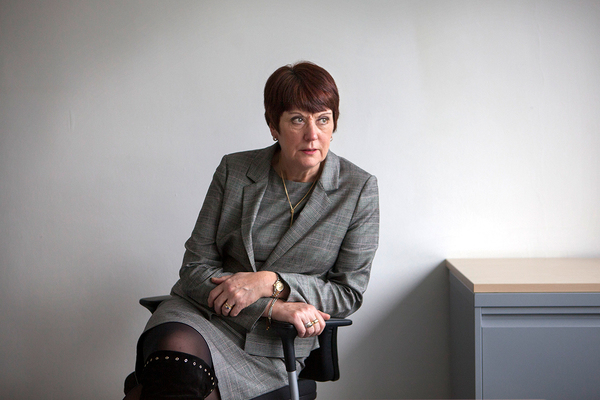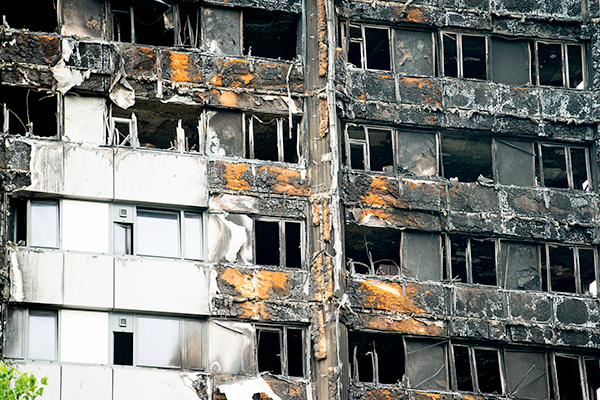Hackitt incorrectly claims combustible material hasn’t passed tests
Dame Judith Hackitt, leader of the government’s post-Grenfell review of building regulations, has incorrectly claimed that no cladding systems using combustible materials have passed large-scale tests.
The final report from Dame Judith’s review was published today and did not recommend an outright ban on combustible materials in cladding systems, as Inside Housing revealed last week.
Justifying her decision in an interview with BBC Radio 4 this morning, Dame Judith claimed that large-scale cladding tests, with combustible materials, had not passed.
However, the government’s fourth post-Grenfell cladding test, which passed, used category two aluminium composite material (ACM), which is flame-retardant but combustible.
The fifth test, meanwhile, which also passed, used polyisocyanurate insulation, which is also combustible. It was used on Grenfell Tower and, according to a report by the Building Research Establishment, seen by Inside Housing, helped flames to spread up and across the tower.
Speaking to the BBC, Dame Judith said: “The regulations and the guidance that exist today already says that the only type of cladding that you can use on high-rise buildings must either be of limited combustibility or must be subject to a full test.
“I don’t know of any systems containing combustible materials which have passed that test, so given that those are the standards that exist today, it’s clear to me that to make this effective, you have to go beyond simply specifying what can and can’t be used.
“You have to put gateways in place that hold those people to account and pick them up if they do try to shortcut the system for any reason.”
Her claim that existing regulations only allow builders to use cladding of limited combustibility or subject it to a full test also ignores the use of desktop studies.
These are used by manufacturers to clear untested materials for use by extrapolating from results of previous cladding tests.
There has been some debate over whether the government’s official guidance allows the use of desktop studies, with the consistent arguing that it does.
Dame Judith’s review opted to limit the use of desktop studies, rather than ban them as many experts and industry groups had demanded.
Official guidance also permits the use of ‘Class 0’ or ‘Euroclass B’ materials on the external surfaces of high rise building, a standard which is well below ‘limited combustibility’.
The government has argued this does not apply to cladding, but there is much evidence that the industry interpreted this to the contrary before the fire.
FULL LIST: HACKITT REVIEW WORKING GROUPS
Working group 1: Golden Thread
Chairs:
Ben Stayte and Hannah Brook
Members:
National Fire Chiefs Council
Local Authority Building Control
Construction Products Association
UIL
National Housing Federation
Health and Safety Executive
Institution of Fire Engineers
Working group 2: Regulations and Guidance
Chair:
Peter Caplehorn, Construction Products Association
Members:
National Fire Chiefs Council
Local Authority Building Council
Fire Industry Association
Building Research Establishment
Health and Safety Executive
Build UK
Chartered Institute of Building Services Engineers
Other groups
Working Group 1: Construction and Design
Chair:
Rachel White, Institute for Civil Engineers
Members:
Association of Consultant Approved Inspectors
Build UK
Local Authority Building Control
National Fire Chiefs Council
Institution of Fire Engineers
Royal Institute of British Architects
Health and Safety Executive
Construction Leadership Council
National House Building Council
Royal Institution of Chartered Surveyors
Working Group 2: Procurement
Chair:
Paul Nash, Chartered Institute of Building
Members:
Telford Homes
Kier Living
Construction Industry Council
Local Government Association
Home Builders Federation
Working Group 2: Occupation and Maintenance
Chair:
Nick Coombe, National Fire Chiefs Council
Members:
Association of Residential Managing Agents
National Fire Chiefs Council
British Institute of Facilities Management
Royal Institution of Chartered Surveyors
Health and Safety Executive
Leasehold Advisory Service
Local Government Association
Association of British Insurers
Working Group 4: Competence
Chair:
Graham Watts, Construction Industry Council
Members:
Royal Institution of Chartered Surveyors
Construction Industry Council Approved Inspector Register
Engineering Council
Fire Industry Association
Local Authority Building Control
Royal Institute of British Architects
National Fire Chiefs Council
Fire Protection Association
University of Edinburgh, School of Engineering
Institution of Fire Engineers
Working Group 5: Residents’ Voice
Chair:
Darren Hartley, TAROE
Members
Association of Residential Managing Agents
British Property Federation
Camden Leaseholders’ Forum, nominated by LEASE
Confederation of Co-operative Housing
Fire Industry Association
National Federation of Tenant Management Organisations
Optivo Homes, nominated by National Housing Federation
Shelter
Tenant Participation Advisory Service
Working Group 6: Quality Assurance and Products
Chair:
Dr Debbie Smith, Building Research Establishment
Members
Construction Products Association
British Standards Institution
United Kingdom Accreditation Service
British Board of Agrement
Fire Protection Association
Fire Industry Association
Centre for Fire and Hazards Science, University of Central Lancashire
National Fire Chiefs Council
Institution of Fire Engineers












